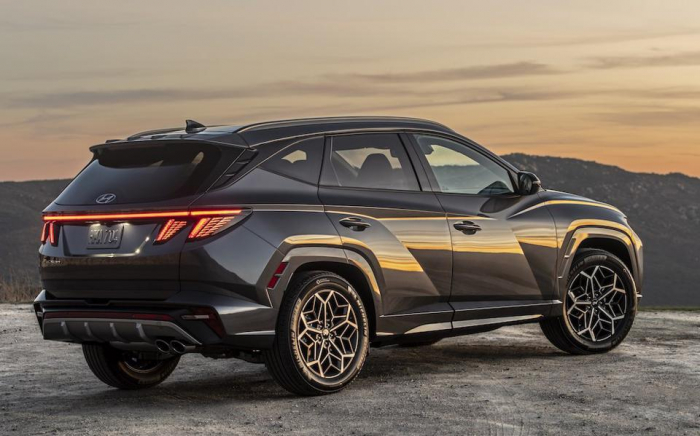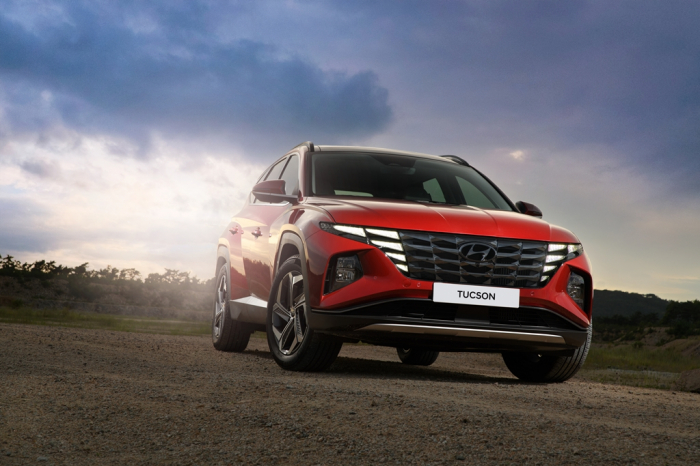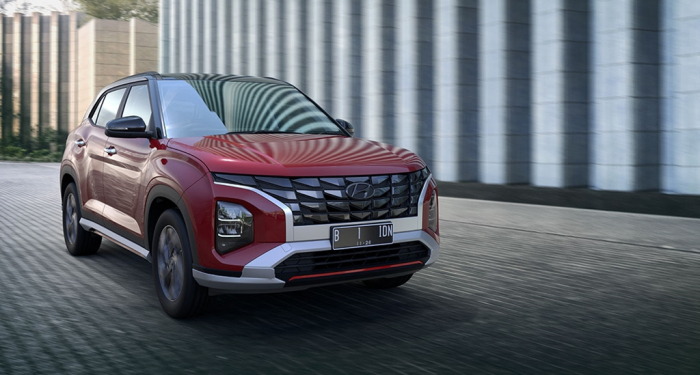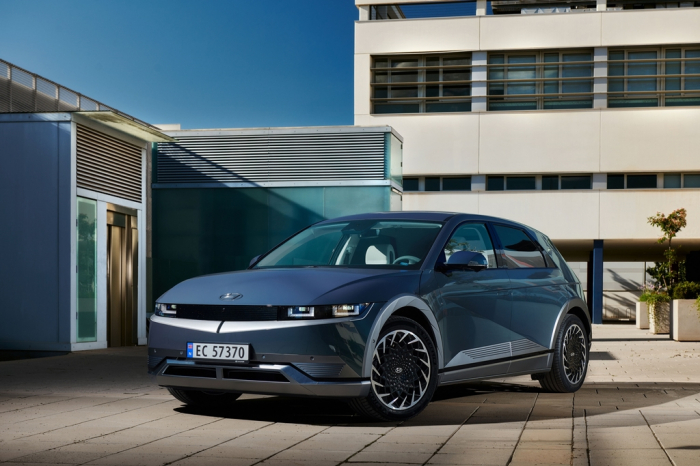Bangladesh: Hyundai’s next target for partially assembled Tucson SUV
Southeast Asia, with its huge growth potential, is enticing to many foreign brands, including Hyundai and Kia
By Feb 27, 2023 (Gmt+09:00)
LG Chem to sell water filter business to Glenwood PE for $692 million


Kyobo Life poised to buy Japan’s SBI Group-owned savings bank


KT&G eyes overseas M&A after rejecting activist fund's offer


StockX in merger talks with Naver’s online reseller Kream


Mirae Asset to be named Korea Post’s core real estate fund operator



Bangladesh has long been a tough market for South Korean automakers to break into, given the decades-old dominance of Japanese carmakers such as Toyota Motor Corp.
To crack the Japanese-led fast-growing Southeast Asian market, Korea's top automaker Hyundai Motor Co. last month built a plant where it can take partially completed vehicles brought from Korea and assemble them into complete ones to sell in Bangladesh and other neighboring Asian markets.
Hyundai produces its mid-sized sport utility vehicle Creta at the plant through a process called Completely Knocked Down, or CKD, manufacturing, for local sales as well as exports to India and other Southeast Asian markets.
To further enhance its presence in Bangladesh, Hyundai now plans to bring its flagship Tucson SUV to the market through a similar method.
Industry sources said on Monday the carmaker is in talks with its union leaders to export the Tucson via Semi Knocked Down, or SKD, manufacturing, which is similar to CKD but at least 50% complete and then fully assembled in Bangladesh.

The move requires a negotiated agreement with unionized workers because vehicle exports through CKD or SKD manufacturing mean less work for employees in Korea, which could lead to job cuts.
Hyundai is pushing for SKD-type exports to take advantage of Bangladesh’s lower tariffs on imports of partially assembled vehicles.
According to the Korea Trade-Investment Promotion Agency’s (KOTRA) office in Dhaka, Bangladesh’s capital, the tariff rates on finished vehicle imports to the country are 127.7% for compact cars with an engine capacity of less than 1.5 liters, 212.2% for mid-size cars with an engine size of less than 2 liters and 442.6% for larger cars with an engine of less than 3 liters.
By law, the Bangladesh government imposes an 89% tariff on partially assembled vehicles regardless of engine size to create jobs for its people.
In Indonesia, Hyundai Motor manufactures some of its IONIQ 5 electric crossovers through an SKD method for exports to India, a bigger market.

BANGLADESH WITH GROWTH POTENTIAL
Hyundai and its sister firm Kia Corp. said last month they plan to bring more of their latest EVs to Southeast Asia to challenge the Japanese rivals.
In Indonesia, one of Southeast Asia’s top car-selling markets, Toyota commands nearly a third of the market. As of the end of 2022, four Japanese companies – Toyota, Daihatsu Motor Co., Mitsubishi Motors Corp. Honda Motor Co. – controlled a combined 75.5% of the market.
Last year, Hyundai opened a manufacturing plant with an annual production capacity of 150,000 units in Indonesia.
Hyundai also operates a car manufacturing plant in Vietnam with an annual production capacity of 150,000 units.
Bangladesh, which currently sells about 50,000 new cars annually, is an attractive market for Hyundai given its strong growth potential and population of 170 million, Bangladesh is also strategically located for exports to Myanmar and other neighbors.

Three Japanese carmakers – Mitsubishi, Toyota and Honda – dominate the Bangladesh market.
Generous state subsidies and tax incentives from several Southeast Asian governments eager to put more EVs on their roads are all the more appealing for foreign brands.
Hyundai Motor, which can manufacture 3,000 cars a year at its Bangladesh factory, plans to ramp up the facility to up to 10,000 cars over the next few years.
India, the world’s third-largest car market after China and the US, is also one of Hyundai Motor Group’s core Asian markets.
Last year, Hyundai Motor’s Creta was the top-selling SUV and the seventh-highest seller among all vehicles in India, which has a population of 1.4 billion.
Write to Hyung-Kyu Kim and Il-Gue Kim at khk@hankyung.com
In-Soo Nam edited this article.
-
 AutomobilesHyundai Motor unveils new Creta at Indonesia motor show
AutomobilesHyundai Motor unveils new Creta at Indonesia motor showFeb 17, 2023 (Gmt+09:00)
1 Min read -
 AutomobilesHyundai, Kia vow to crack Japan-dominated SE Asian market with EVs
AutomobilesHyundai, Kia vow to crack Japan-dominated SE Asian market with EVsJan 21, 2023 (Gmt+09:00)
4 Min read -
 AutomobilesHyundai, Kia post record sales in India; to build IONIQ 5 locally
AutomobilesHyundai, Kia post record sales in India; to build IONIQ 5 locallyJan 10, 2023 (Gmt+09:00)
4 Min read -
 AutomobilesHyundai to make IONIQ 5 in Indonesia, EV hub for ASEAN market
AutomobilesHyundai to make IONIQ 5 in Indonesia, EV hub for ASEAN marketMar 16, 2022 (Gmt+09:00)
3 Min read -
 AutomobilesHyundai to target Southeast Asia EV market from Indonesia
AutomobilesHyundai to target Southeast Asia EV market from IndonesiaOct 25, 2021 (Gmt+09:00)
2 Min read -
 Hydrogen economyHyundai Motor, Grab deepen partnership for EV adoption in Southeast Asia
Hydrogen economyHyundai Motor, Grab deepen partnership for EV adoption in Southeast AsiaJun 23, 2021 (Gmt+09:00)
2 Min read


